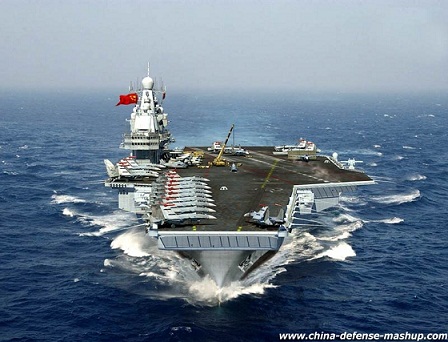China’s Defense White Paper released last Tuesday is an interesting read in the light of the current tension in the Korean Peninsula and the Philippine’s territorial dispute with the new world economic and military power.
The White Paper titled, “The Diversified Employment of China’s Armed Forces” was released as US State Secretary John Kerry completes his Asia visit (South Korea and Japan) re-affirming the “rebalancing” policy initiated by the Obama administration in its first term.
Under the rebalancing or “pivot” policy, the US shifts its military power and presence from the Middle East war zone to the Asia Pacific region.
Apparently, the shift in the America’s focus to Asia is a matter of concern to Beijing. “The Asia-Pacific region has become an increasingly significant stage for world economic development and strategic interaction between major powers. The US is adjusting its Asia-Pacific security strategy, and the regional landscape is undergoing profound changes,”the White paper said.
The White Paper touched on territorial disputes but didn’t mention the Philippines or Huangyan island (Bajo de Masinloc to the Philippines. Also known as Scarborough Shoal). But it mentioned Japan, which shows the seriousness that China puts on the territorial dispute over Diayu or Senkaku islands.
The White Paper said, “Some country has strengthened its Asia-Pacific military alliances, expanded its military presence in the region, and frequently makes the situation there tenser. On the issues concerning China’s territorial sovereignty and maritime rights and interests, some neighboring countries are taking actions that complicate or exacerbate the situation, and Japan is making trouble over the issue of the Diaoyu Islands.”
The Defense paper reiterated China’s policy of “We will not attack unless we are attacked; but we will surely counterattack if attacked.”
“ China’s armed forces unswervingly implement the military strategy of active defense, guard against and resist aggression, contain separatist forces, safeguard border, coastal and territorial air security, and protect national maritime rights and interests and national security interests in outer space and cyber space. ‘We will not attack unless we are attacked; but we will surely counterattack if attacked.’ Following this principle, China will resolutely take all necessary measures to safeguard its national sovereignty and territorial integrity,” the paper said.
And to impress everybody that they mean business, the White paper gave some information on the People’s Liberation Army and its capability.
What should interest the Philippines is the building up of the PLA Navy ,China’s mainstay for operations at sea.
The White Paper said, “PLAN is responsible for safeguarding its maritime security and maintaining its sovereignty over its territorial seas along with its maritime rights and interests. The PLAN is composed of the submarine, surface vessel, naval aviation, marine corps and coastal defense arms.
“In line with the requirements of its offshore defense strategy, the PLAN endeavors to accelerate the modernization of its forces for comprehensive offshore operations, develop advanced submarines, destroyers and frigates, and improve integrated electronic and information systems. Furthermore, it develops blue-water capabilities of conducting mobile operations, carrying out international cooperation, and countering non-traditional security threats, and enhances its capabilities of strategic deterrence and counterattack.
“Currently, the PLAN has a total strength of 235,000 officers and men, and commands three fleets, namely, the Beihai Fleet, the Donghai Fleet and the Nanhai Fleet. Each fleet has fleet aviation headquarters, support bases, flotillas and maritime garrison commands, as well as aviation divisions and marine brigades. In September 2012, China’s first aircraft carrier Liaoning was commissioned into the PLAN. China’s development of an aircraft carrier has a profound impact on building a strong PLAN and safeguarding maritime security.”
This is what the Philippines has to deal with in case what everybody prays won’t happen- an armed confrontation- would happen in Bajo de Masinloc and in the Spratlys.
